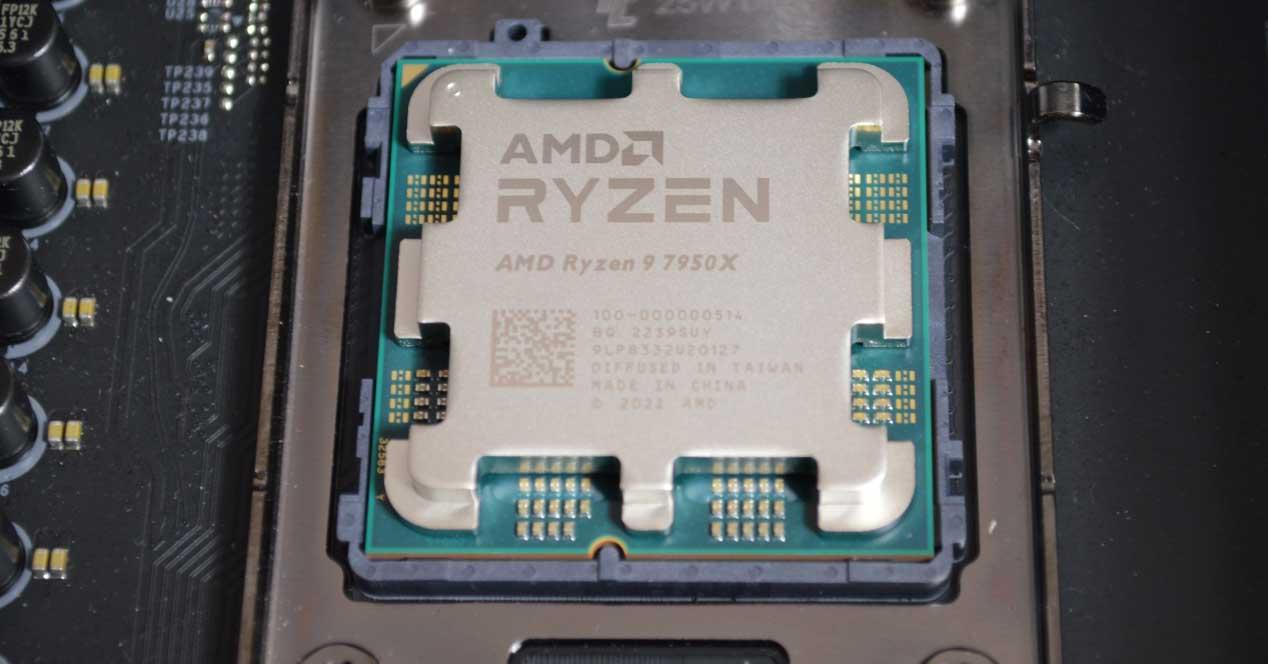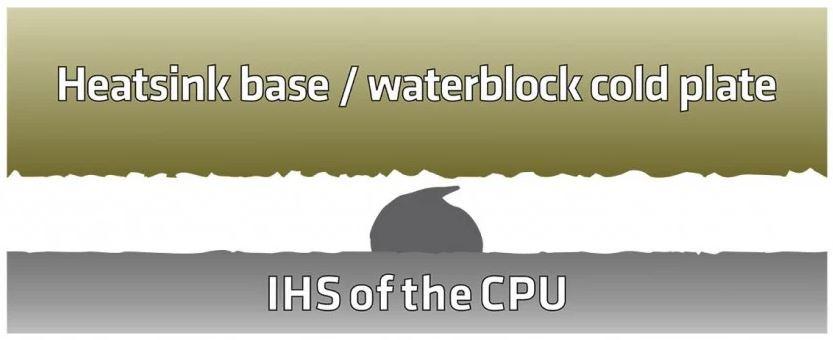
The new generation of AMD processors with socket AM5 has brought many new features under the hood, but also on it, and that is that the ihs design with those “holes” it is giving a lot to talk about for the problems, especially potential, which can cause. Will this affect you if you decide to upgrade your PC to AMD’s new AM5 platform? Let’s analyze it.
For the first time in a long time, AMD has changed the socket type on its processors, switching to using the LGA design that places the contact pins on the socket instead of on the processor. This is not a problem at all, the problem in this case lies in the design of the IHS, the upper part of the processor that is the one that makes contact with the heatsink, since it has no less than 8 concavities that can cause problems.
The IHS problems of AMD AM5 processors
The problem is the following: the shape of the IHS of AMD’s new generation AM5 processors have a total of 8 “holes”, two for each of the sides of the square that makes up this part of the processor. In the first instance, when we reviewed the AM5 platform, we already criticized this design for the simple fact that these areas were clear candidates for thermal paste to build up on them, something that does not have to cause problems in itself since the paste Thermal is not a conductor of electricity, but it can mean that you end up with the processor area and the socket made a “dirty shop”.
In fact, to avoid this “design problem” (let’s call it that, although AMD engineers will not say that it is a problem but a design feature), some manufacturers such as Aqua Computer have already released an accessory to “seal” it and thus avoid that thermal paste accumulates in the area, and although some users have criticized it because they think that this will raise the operating temperature of the processor, in reality it does not have to be that way… soon we will talk about the temperature.
The IHS of the processor is in contact with the CPU chip itself, in some cases with thermal paste and in others soldered. The fact is that this element helps to dissipate the heat generated by the chip, or rather, it promotes the dispersion of heat on its surface so that later, when we install a heatsink, heat can be transmitted from the chip to it more efficiently. .
Then, between the IHS and the heatsink, we always put thermal paste to alleviate the bulges and concavities that one and the other may have, as shown in the image above, since they are not completely flat and therefore the contact between them is not perfect, promoting thanks to this thermal paste a better transmission of heat from one to another. We have already commented that the design of these AMD processors means that thermal paste can accumulate in the holes, but there is another additional problem, and that is that it is reducing the heat dissipation surface.
CPU coolers have a base with a certain size, according to the size of the processors so that they fit almost perfectly (and this is independent of whether they are Intel or AMD). The fact that AMD has put these holes in the IHS of its processors reduces the contact surface of the IHS, and with it also the heat dissipation and transmission surface, inevitably causing a reduction in heat dissipation efficiency. heat. In other words, these holes cause heat dissipation to be worse and therefore the operating temperature to be higher.
Why has AMD decided to make a design that technically looks so bad? We don’t know, it’s probably for aesthetics, but if manufacturers are already venturing to launch products to alleviate the problem, it will be for a reason.
Now, answering the question in the headline, will you have problems if you buy a new generation AM5 processor? Not necessarily, we have already seen in our (several) analyzes that these processors, although they are quite “warm”, do not suffer from temperature problems, at least not excessively. However, if they had a homogeneous IHS with a larger surface area, we are sure that the heat dissipation efficiency would be better and both potential temperature problems and the need to buy a high performance heatsink to maintain the temperature would be reduced. at bay (not to mention what has already been said that the thermal paste overflows there).






